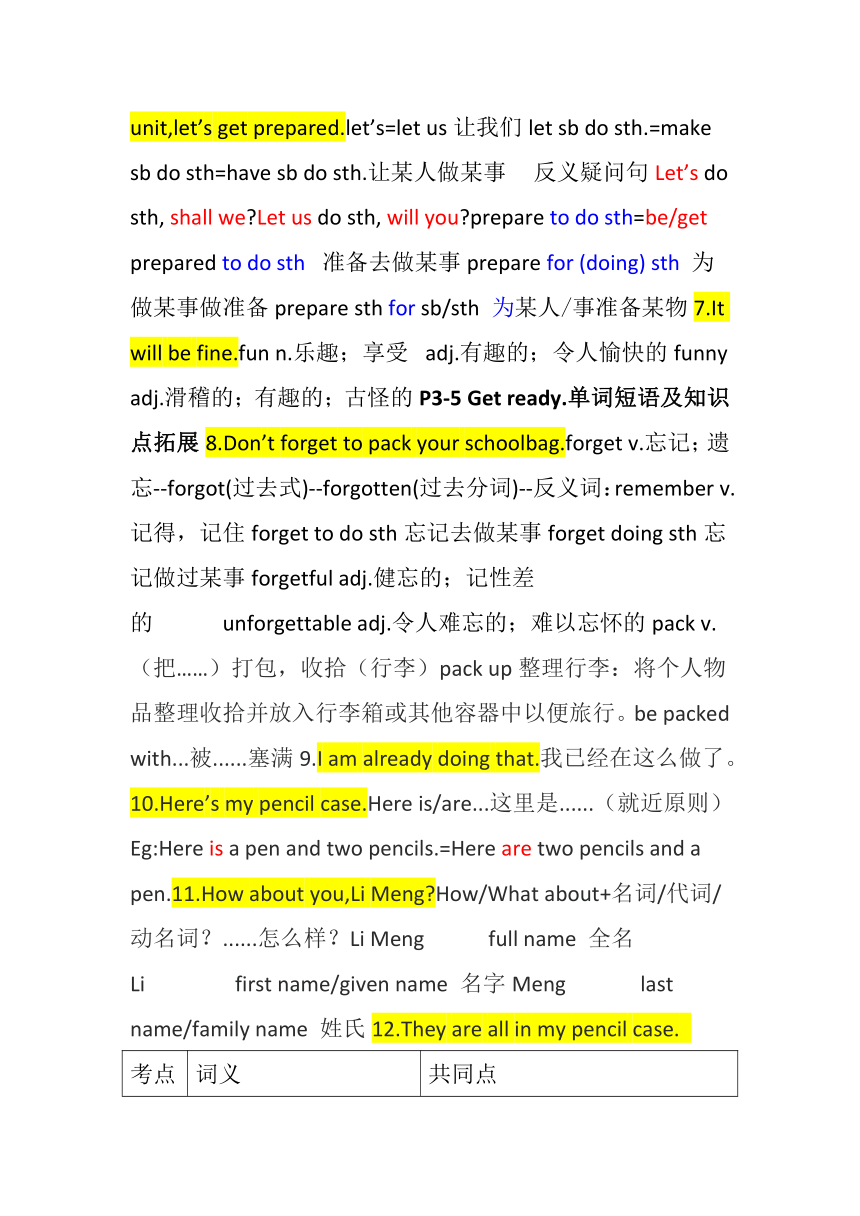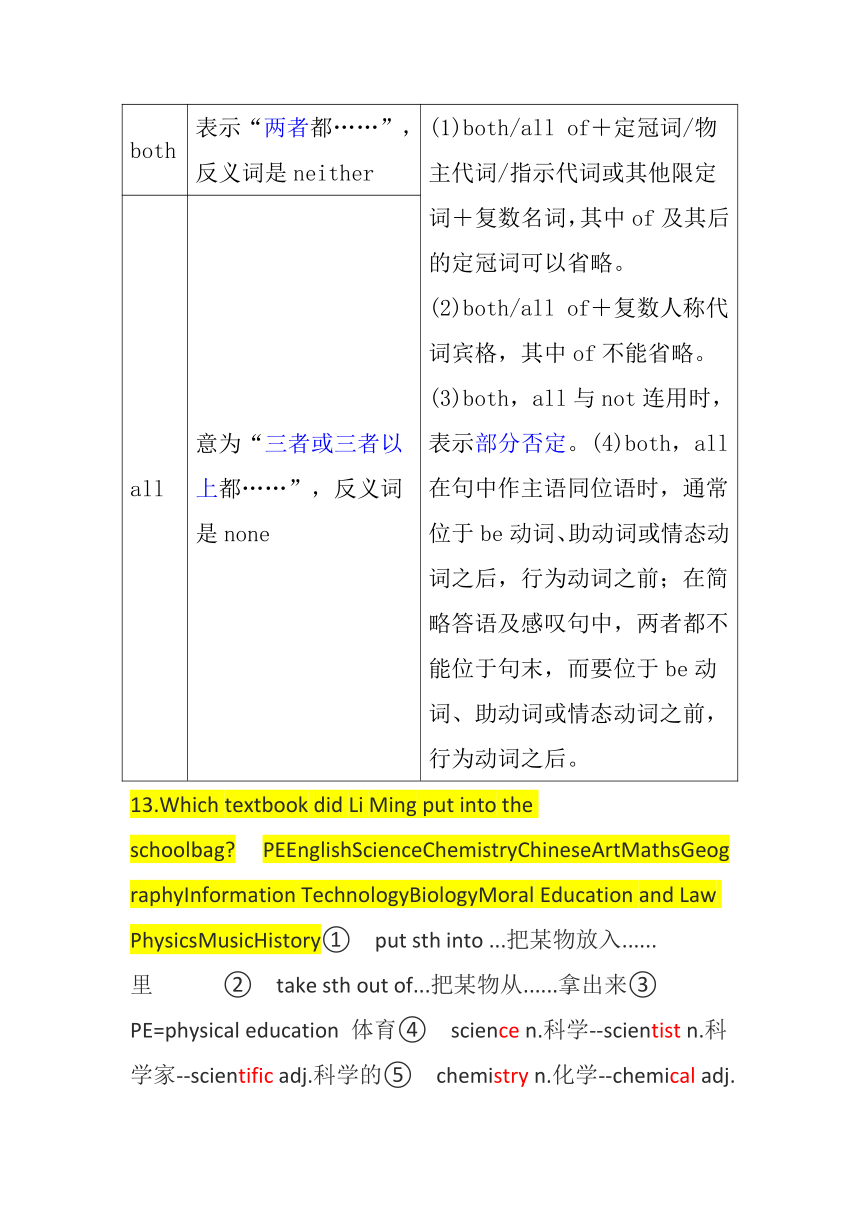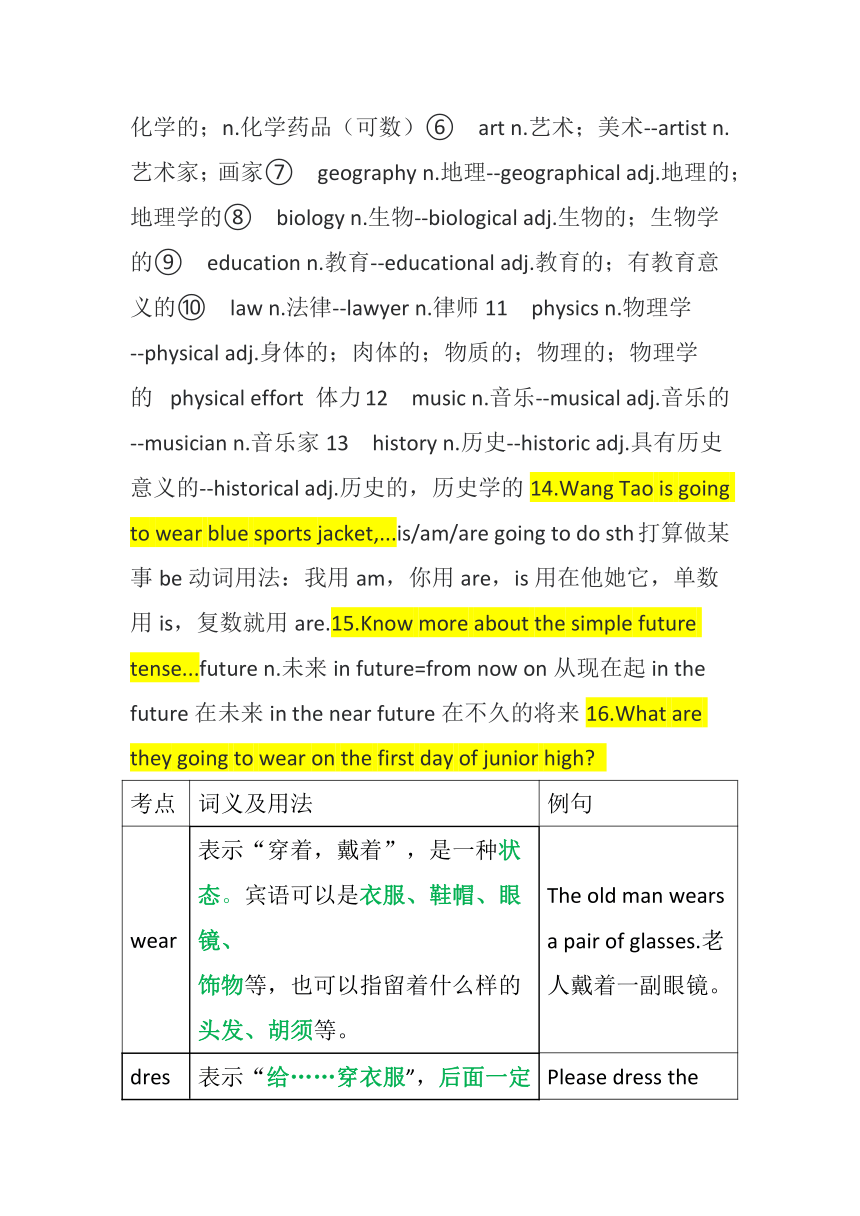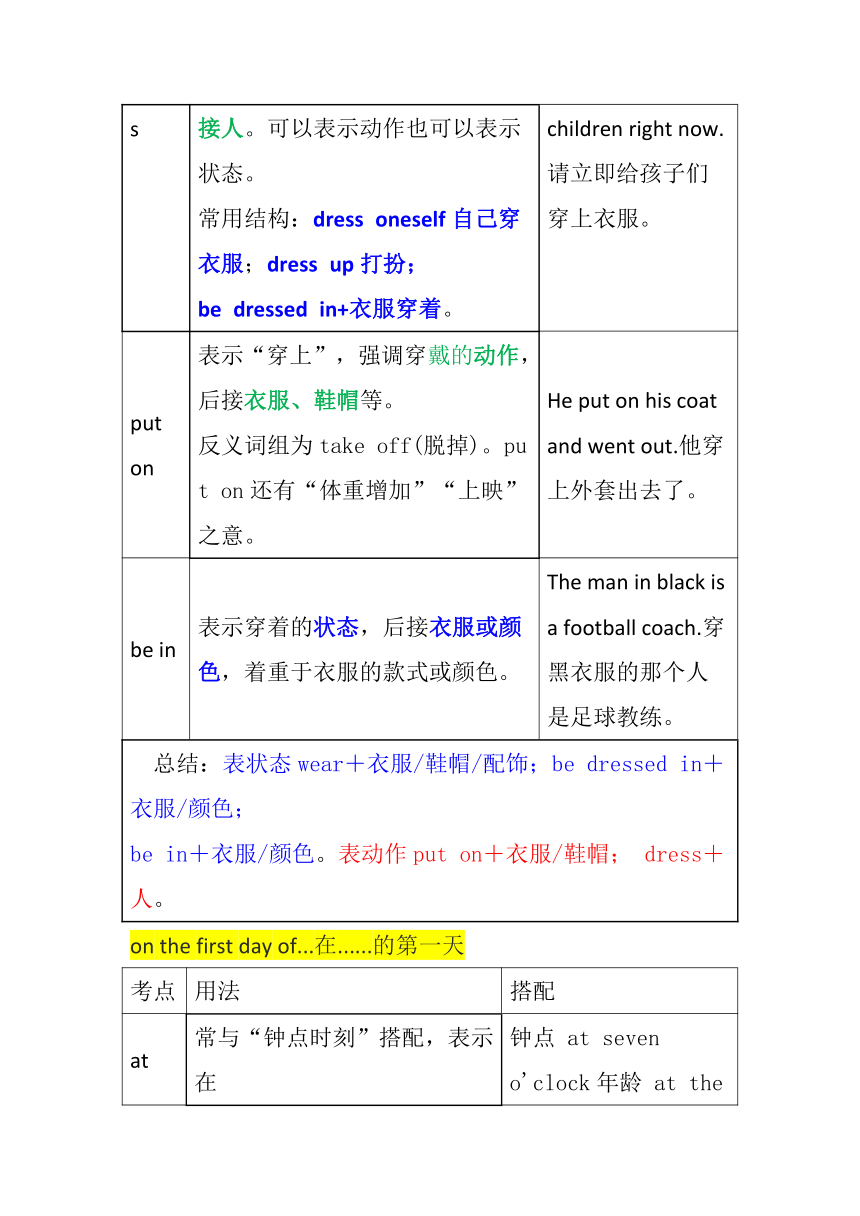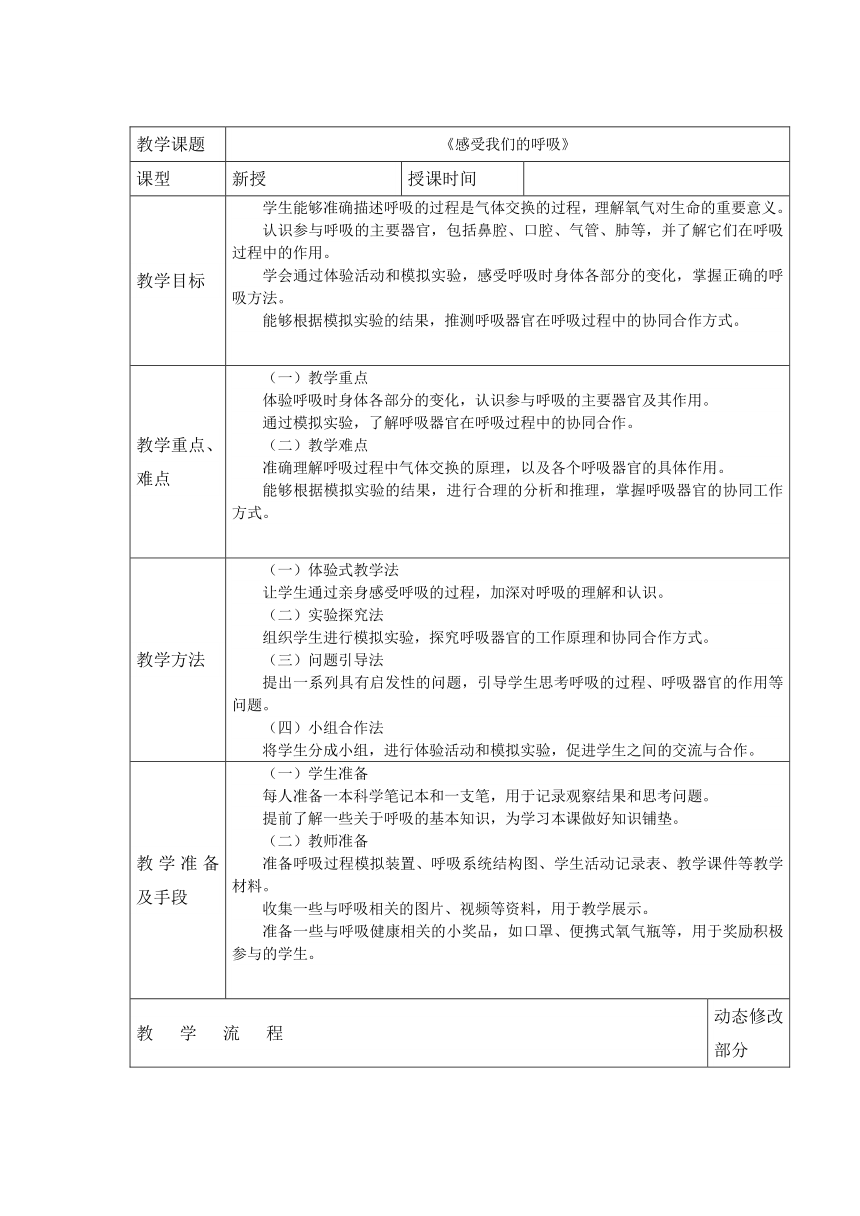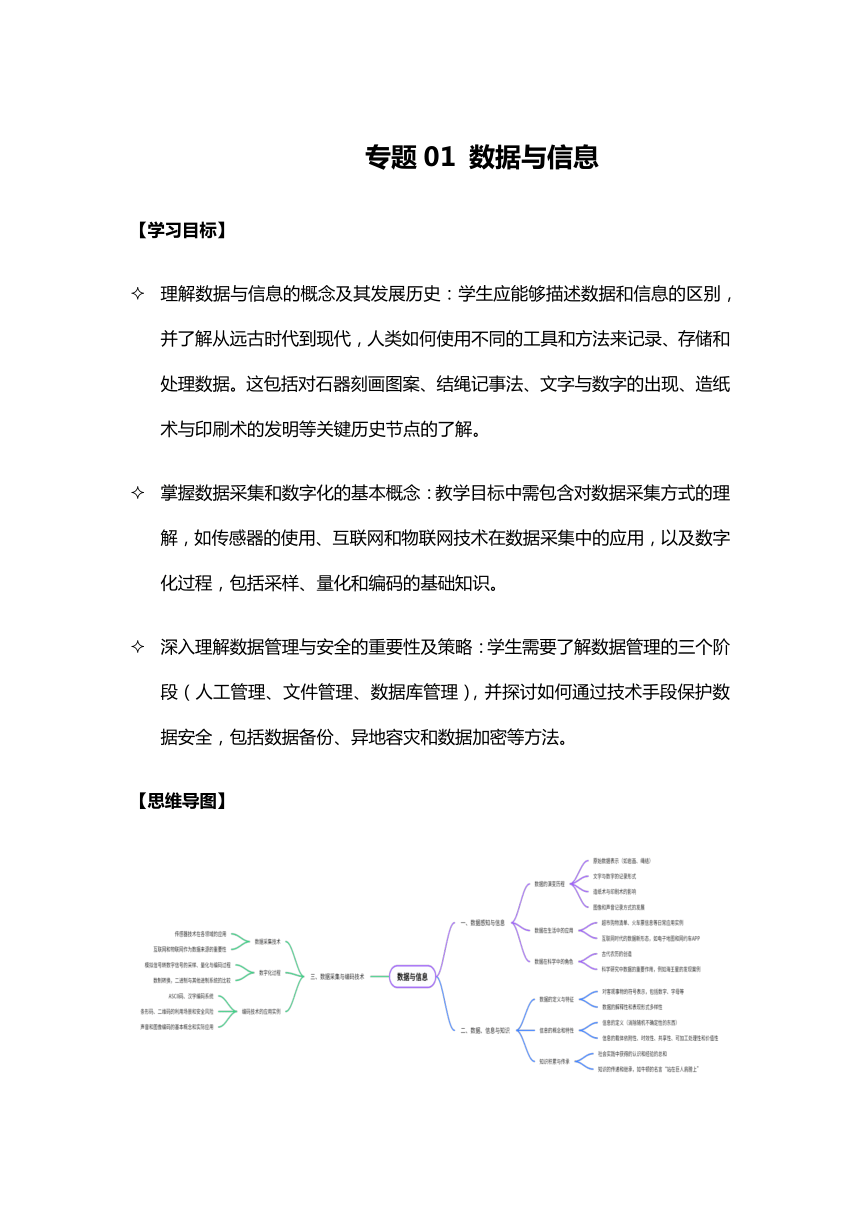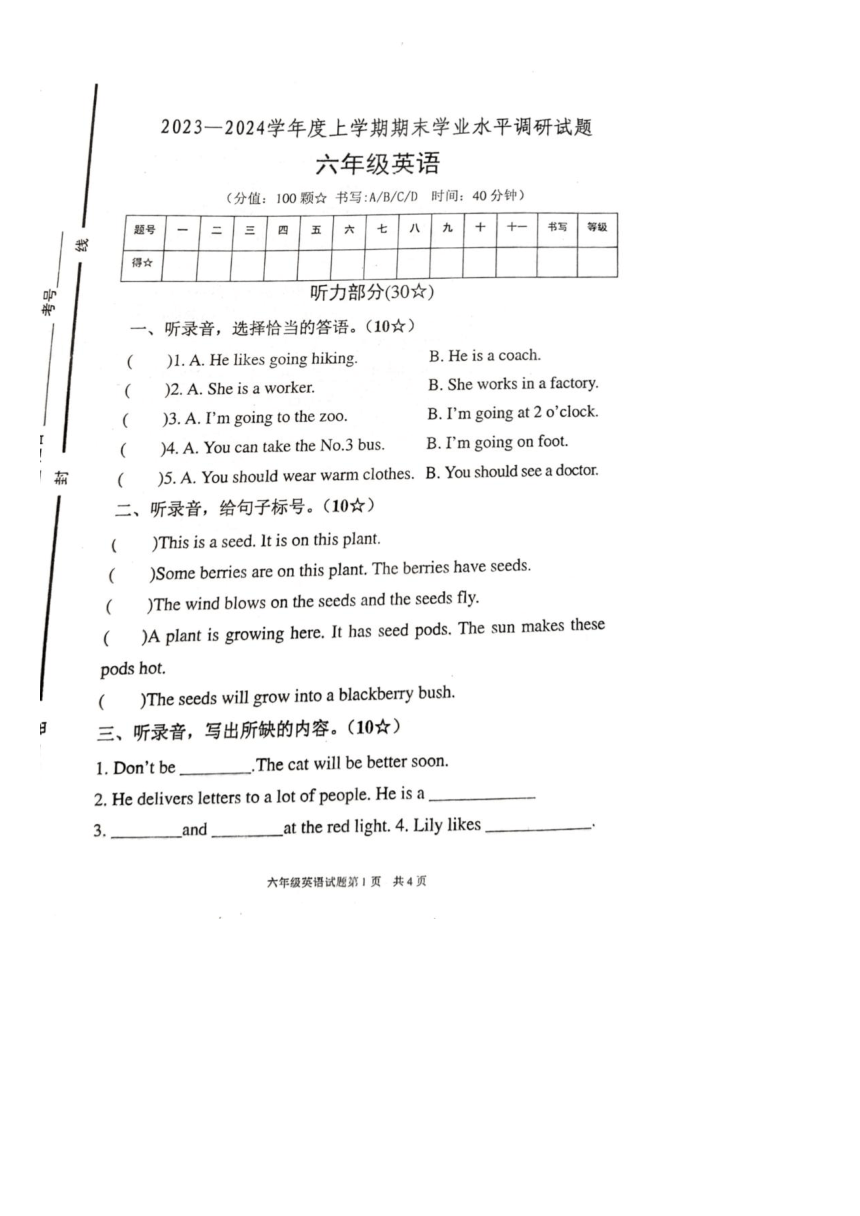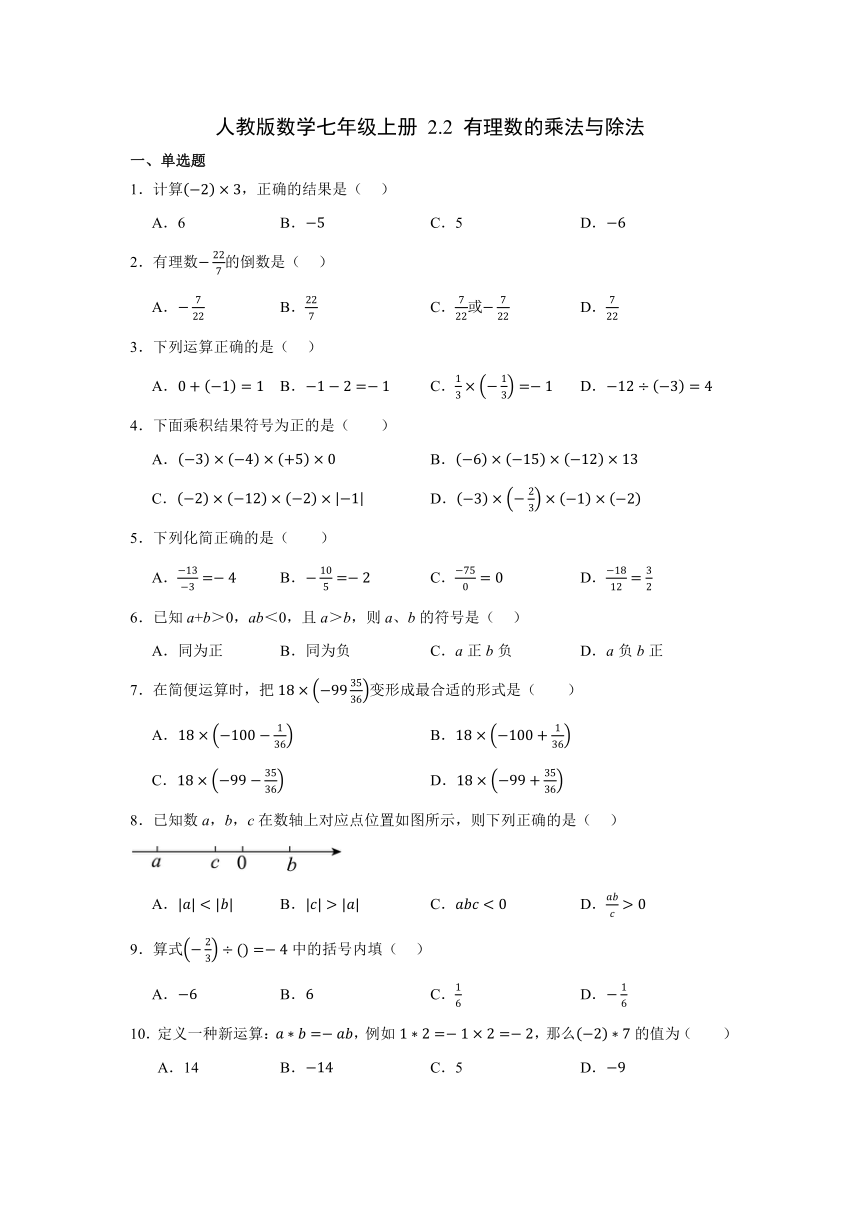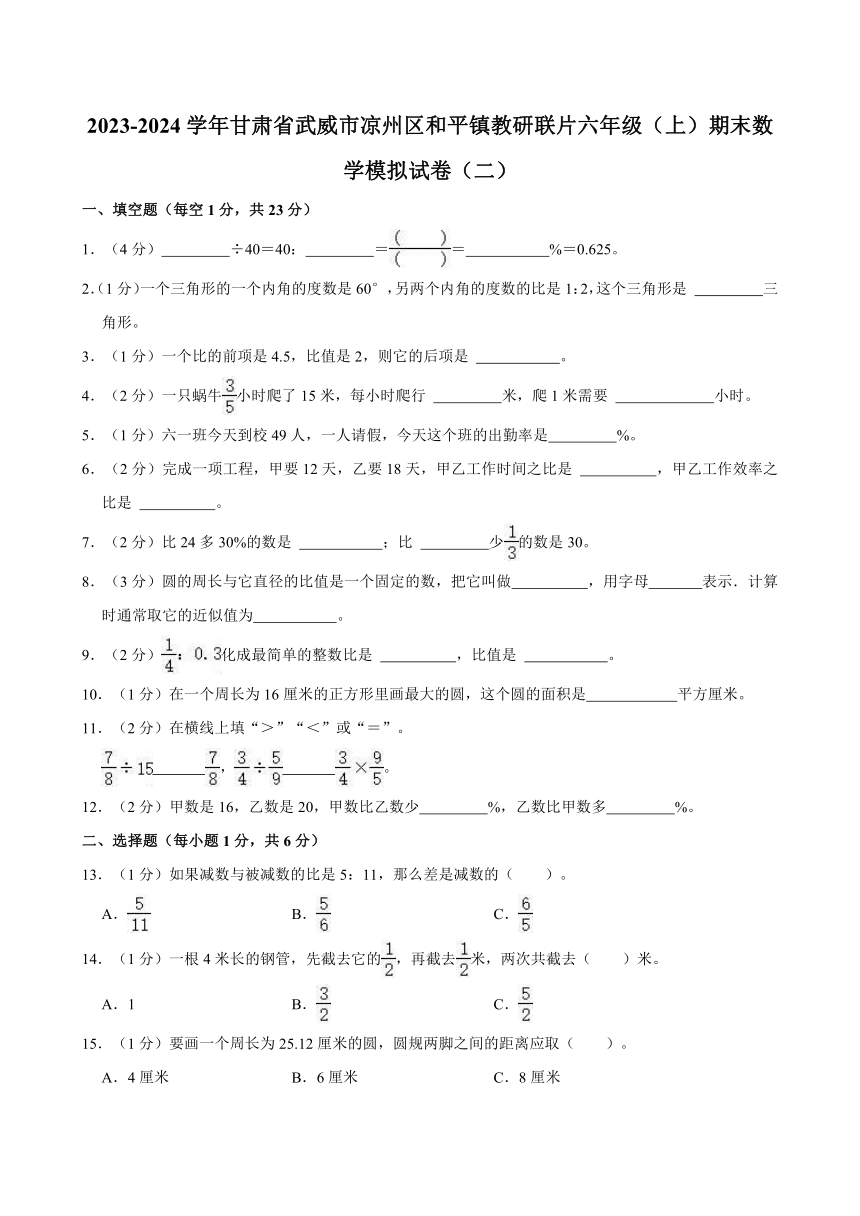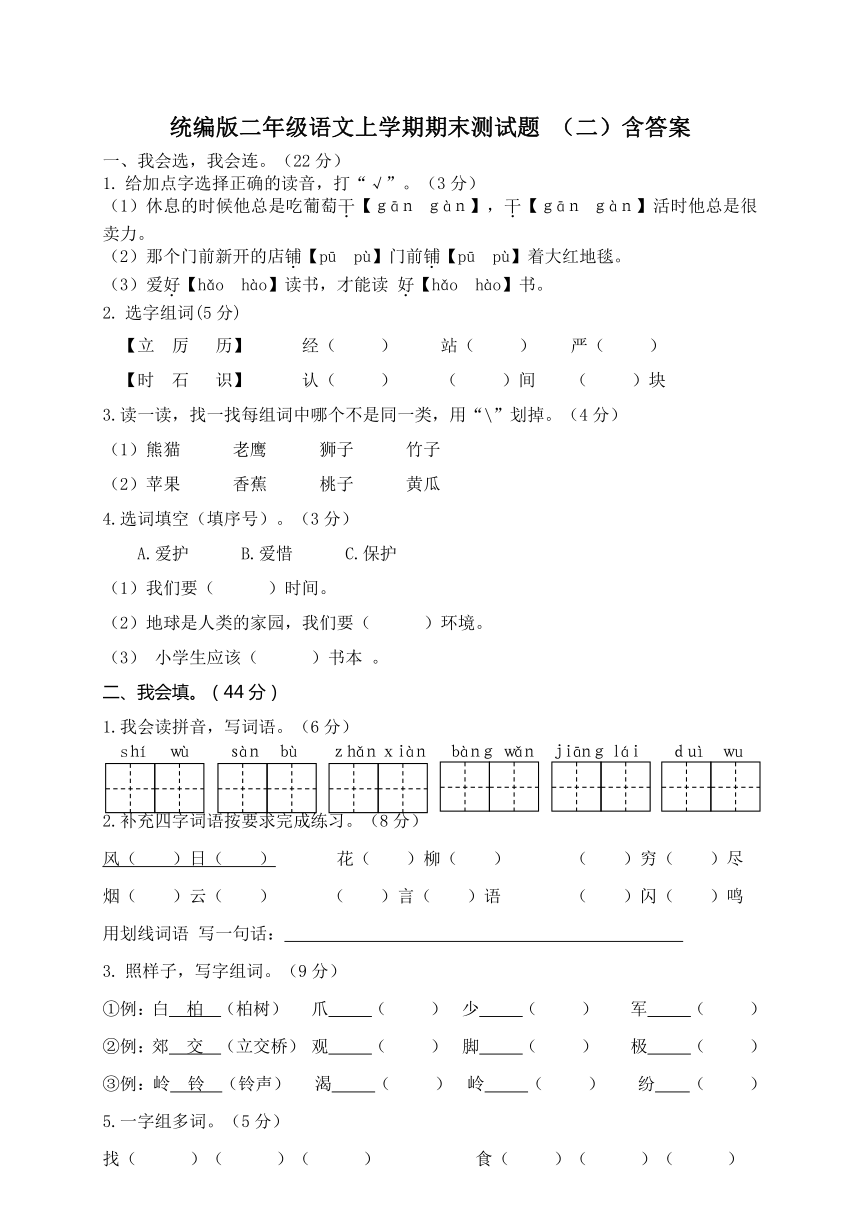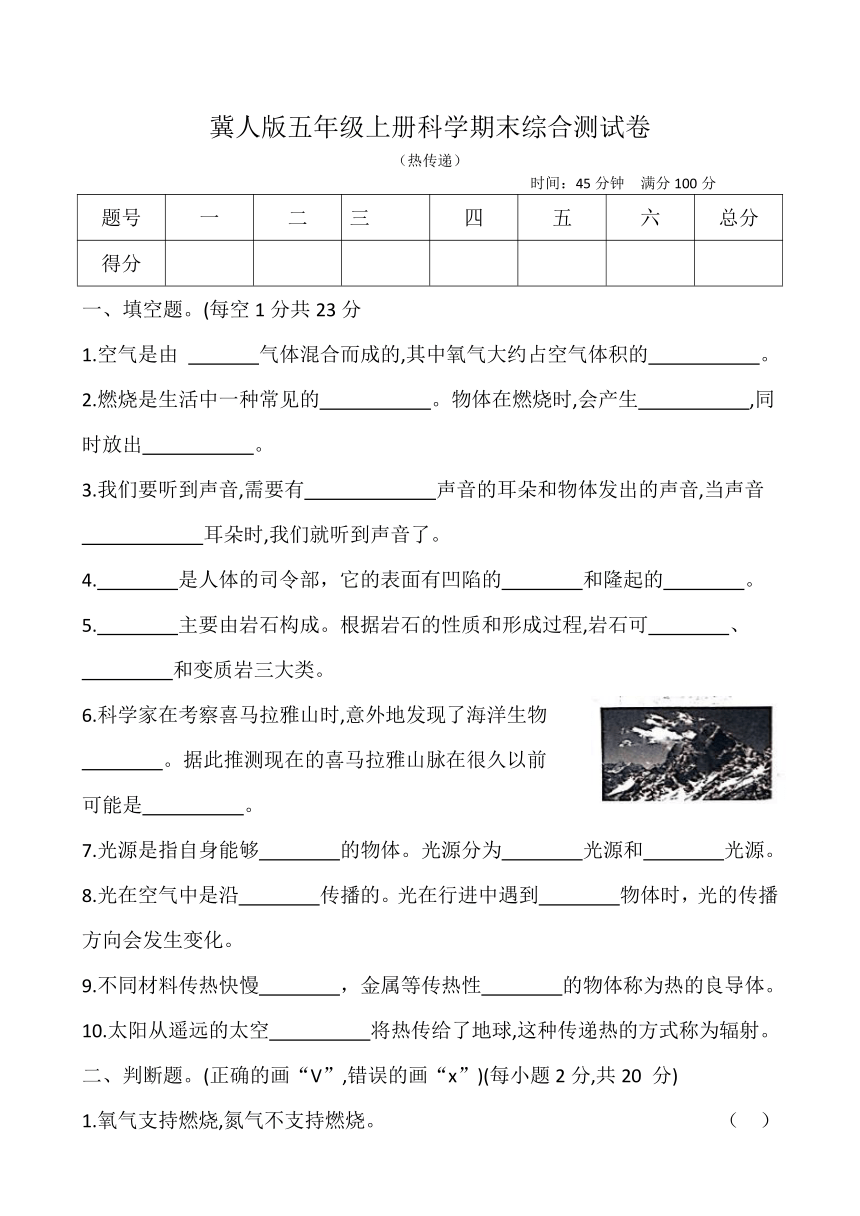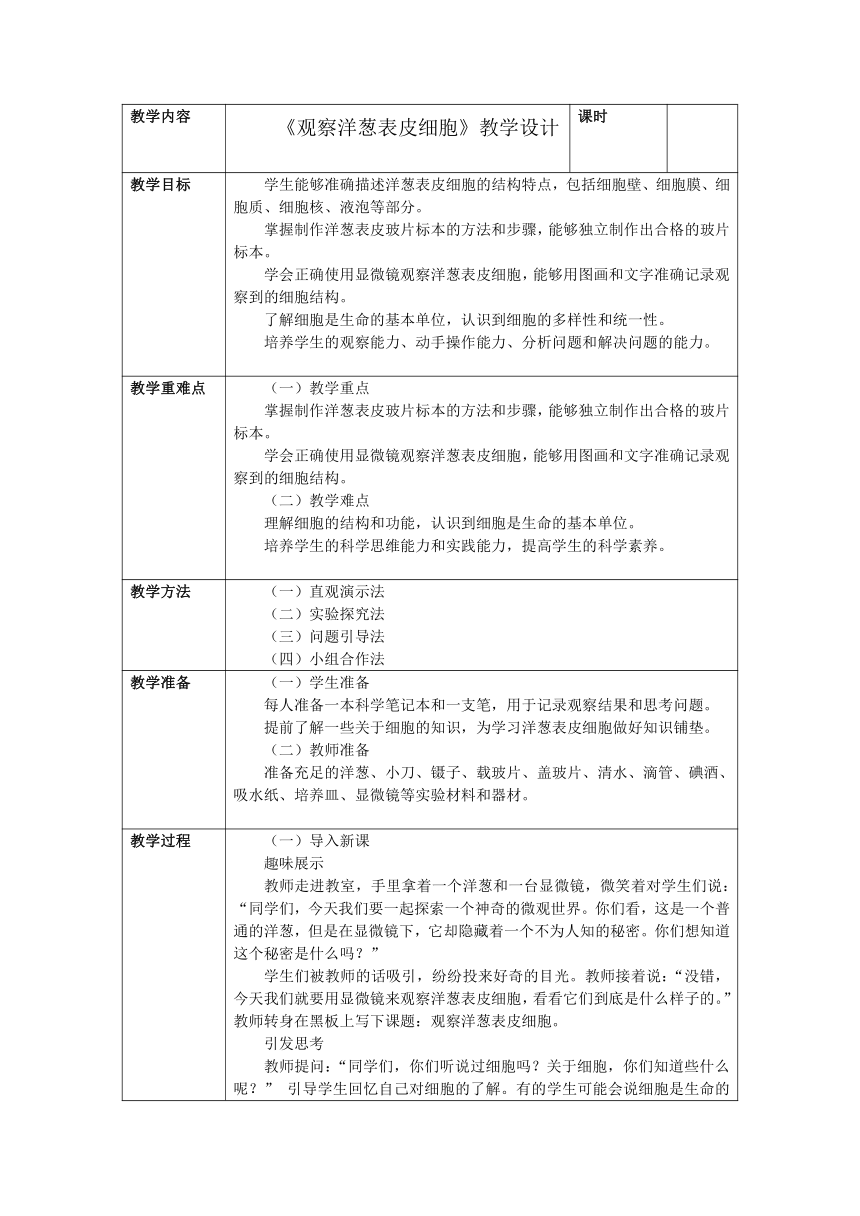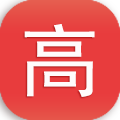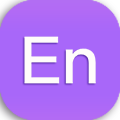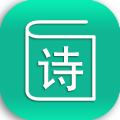外研版(2024)七年级上册Starter Welcome to junior high知识点
2024-09-12 18:02:59 学考宝 作者:佚名
Word文档版
学考宝(xuekaobao.com)友情提示:html格式不完整,如有需要请根据文末提示下载并进行二次校对Word文档。
2024外研版七上Starter 知识点
单词短语及知识点拓展
Welcome to junior high. Welcome (sb.) to sp. 欢迎(某人)来到某地Welcome (sb.) to do sth. 欢迎(某人)做某事Welcome (sb.) back to sp. 欢迎(某人)回到某地primary school 小学junior high school 初中senior high school 高中
2.It is a new stage of your study. a new stage of... ......的新舞台/阶段3.You will learn new subjects.learn v.学习--learned/learnt(过去式)learn sth 学习某事learn from sb 向某人学习learn ... from sb/sth 从某人/某事中学到......learn about... 了解关于......的事learn to do sth 学习做某事4.You will also make new friends.make a friend.交一个朋友make friends.交朋友make friends with sb和某人交朋友表示“也”too/as well/either/also的区别 too用于肯定句尾,前面可以有逗号。as well用于肯定句尾,前面没有逗号。either用于否定句尾,前面有无逗号均可。also用于句中(行前be后/形前be后)5.Are you ready for all these be ready to do sth=be ready for (doing) sth 准备好去做某事(强调状态) get ready to do sth=get ready for (doing) sth 准备好去做某事(强调动作) get sth ready=have sth ready把某物准备好6.In this unit,let’s get prepared.let’s=let us让我们let sb do sth.=make sb do sth=have sb do sth.让某人做某事 反义疑问句Let’s do sth, shall we Let us do sth, will you prepare to do sth=be/get prepared to do sth 准备去做某事prepare for (doing) sth 为做某事做准备prepare sth for sb/sth 为某人/事准备某物7.It will be fine.fun n.乐趣;享受 adj.有趣的;令人愉快的funny adj.滑稽的;有趣的;古怪的P3-5 Get ready.单词短语及知识点拓展8.Don’t forget to pack your schoolbag.forget v.忘记;遗忘--forgot(过去式)--forgotten(过去分词)--反义词:remember v.记得,记住forget to do sth忘记去做某事forget doing sth忘记做过某事forgetful adj.健忘的;记性差的 unforgettable adj.令人难忘的;难以忘怀的pack v.(把……)打包,收拾(行李)pack up整理行李:将个人物品整理收拾并放入行李箱或其他容器中以便旅行。be packed with...被......塞满9.I am already doing that.我已经在这么做了。10.Here’s my pencil case.Here is/are...这里是......(就近原则)Eg:Here is a pen and two pencils.=Here are two pencils and a pen.11.How about you,Li Meng How/What about+名词/代词/动名词?......怎么样?Li Meng full name 全名Li first name/given name 名字Meng last name/family name 姓氏12.They are all in my pencil case.
考点 词义 共同点
both 表示“两者都……”,反义词是neither (1)both/all of+定冠词/物主代词/指示代词或其他限定词+复数名词,其中of及其后的定冠词可以省略。(2)both/all of+复数人称代词宾格,其中of不能省略。(3)both,all与not连用时,表示部分否定。(4)both,all在句中作主语同位语时,通常位于be动词、助动词或情态动词之后,行为动词之前;在简略答语及感叹句中,两者都不能位于句末,而要位于be动词、助动词或情态动词之前,行为动词之后。
all 意为“三者或三者以上都……”,反义词是none
13.Which textbook did Li Ming put into the schoolbag PEEnglishScienceChemistryChineseArtMathsGeographyInformation TechnologyBiologyMoral Education and Law PhysicsMusicHistory① put sth into ...把某物放入......里 ② take sth out of...把某物从......拿出来③ PE=physical education 体育④ science n.科学--scientist n.科学家--scientific adj.科学的⑤ chemistry n.化学--chemical adj.化学的;n.化学药品(可数)⑥ art n.艺术;美术--artist n.艺术家;画家⑦ geography n.地理--geographical adj.地理的;地理学的⑧ biology n.生物--biological adj.生物的;生物学的⑨ education n.教育--educational adj.教育的;有教育意义的⑩ law n.法律--lawyer n.律师11 physics n.物理学--physical adj.身体的;肉体的;物质的;物理的;物理学的 physical effort 体力12 music n.音乐--musical adj.音乐的--musician n.音乐家13 history n.历史--historic adj.具有历史意义的--historical adj.历史的,历史学的14.Wang Tao is going to wear blue sports jacket,...is/am/are going to do sth打算做某事be动词用法:我用am,你用are,is用在他她它,单数用is,复数就用are.15.Know more about the simple future tense...future n.未来in future=from now on从现在起in the future在未来in the near future在不久的将来16.What are they going to wear on the first day of junior high
考点 词义及用法 例句
wear 表示“穿着,戴着”,是一种状态。宾语可以是衣服、鞋帽、眼镜、
饰物等,也可以指留着什么样的头发、胡须等。 The old man wears a pair of glasses.老人戴着一副眼镜。
dress 表示“给……穿衣服”,后面一定接人。可以表示动作也可以表示状态。
常用结构:dress oneself自己穿衣服;dress up打扮;
be dressed in+衣服穿着。 Please dress the children right now.请立即给孩子们穿上衣服。
put on 表示“穿上”,强调穿戴的动作,后接衣服、鞋帽等。
反义词组为take off(脱掉)。put on还有“体重增加”“上映”之意。 He put on his coat and went out.他穿上外套出去了。
be in 表示穿着的状态,后接衣服或颜色,着重于衣服的款式或颜色。 The man in black is a football coach.穿黑衣服的那个人是足球教练。
总结:表状态wear+衣服/鞋帽/配饰;be dressed in+衣服/颜色;
be in+衣服/颜色。表动作put on+衣服/鞋帽; dress+人。
on the first day of...在......的第一天
考点 用法 搭配
at 常与“钟点时刻”搭配,表示在
某一具体时刻。 钟点 at seven o'clock年龄 at the age of 45时间 at this time一天中的某段时间 at noon/at night
in 常与表示“范围性”的时间名词搭配。或泛指上午下午或晚上 月份 in March 年份 in 2012季节 in winter 一天中某段时间 in the morning/afternoon/evening
on 常与“具体日期”“星期几”搭配或
具体某一天的上午、下午、晚上。 日期 on October 1st星期几 on Monday 节假日 on weekends; on New Year's Day某一天的某时段 on Friday evening
P6-8 Know your school17.This is your new school. 语法:指示代词this,these, that,those以及it,such,same等词叫做指示代词。指示代词在句中作主语,宾语,表语,定语指示代词的用法:this 和 these 表示在时间上或空间上较近的人或物。Eg:This is a book.这是一本书。that 和those 表示在时间上或空间上较远的人或物。Eg:That is not a room.那不是一间房间。 that 和those 还可以指前文中的事物,this 和 these 指下文中将要讲到的事物。他们起一种承上或启下的作用。Eg:I got up late,that's why I missed the bus.我起床迟了,这就是为什么我没赶上汽车。指示代词与定冠词和人称代词一样,都具有指定的含义。指示代词分单数(this / that)和复数(these / those)两种形式,既可作限定词又可做代词,例如:单数 复数限定词:This girl is Mary. Those men are my teachers.代词: This is Mary. Those are my teachers.注意:用指示代词作主语的疑问句,用人称代词it/they回答Eg:Is this your pen Yes,it is. No,it isn’t.Eg:Are these your shoes Yes,they are.No,they aren’t.18.There are three buildings and a playground.There be句型表示客观存在,意为“某处有某人或某物”。 ①其肯定结构为“There be+主语(某人/某物)+介词短语(作状语)”。be动词的形式由离它最近的那个名词的数来决定,即遵循“就近一致原则”。②否定结构:There be+not+主语+介词短语。③一般疑问句:Be there+主语+介词短语?肯定回答是:“Yes,there be.”否定回答是:“No,there+be与not的缩写形式”。④常用时态:一般将来时“There will be+主语+介词短语”和“There is/are going to be+主语+介词短语”;一般过去时“There was/were+主语+介词短语”。一般现在时“There is/are+主语+介词短语”。【拓展】 There be句型的其他常用结构:①There be+名词+to do sth.:不定式to do做定语,表示动作还未发生;②There be+名词+doing sth.:doing表示主动且动作正在发生;③There be+名词+done sth.:done表示被动。have/has表示主观拥有,意为“某人或某物拥有......”。with prep.意为“某人或某物带有...”。19.It’s not very big,but it is beautiful.人称代词的it用法:① 指代前面提到的同一事物。② 代替指示代词this/that.③ 指代婴儿或不明身份的人。④ 表示天气,时间或距离。⑤ 做形式主语:It is+adj+of/for sb to do sth.⑥ 做形式宾语:sb feel/think/make/keep it+adj+to do sth.20.Today,some volunteers will show you around. volunteer v.自愿 volunteer to do sth自愿做某事 n.志愿者voluntary adj.自愿的,自发的show sb around sp=take sb around sp带领某人参观某地 show n.节目;表演 TV show电视节目 talk show谈话节目 展览 on show在展出v.展示;展览 show sb sth=show sth to sb向某人展示某物 show up出席;出现 show off炫耀show--showed(过去式)--shown(过去分词)21.Please follow them. follow v.跟随;紧跟着;采纳;遵守 follow sb to do sth跟随某人做某事 follow/take one’s advice采纳某人的意见 follow the rules遵守规则following adj.紧跟着的;接下来的follower n.追随者22.The food in the dining hall is healthy but not delicious. health n.健康--healthy adj.健康的/unhealthy adj.不健康的--healthily adv.健康地/unhealthily adv.不健康地 in good health 身体健康 keep healthy 保持健康 eat healthily 吃地健康23.This is Building 2.编号表达法:单位名词+基数词=the+序数词+单位名词 注意:基数词前无the,序数词前有the;用基数词时,基数词和单位名词首字母大写;用序数词时,序数词和单位名词首字母不大写。Eg:Turn to Page Six.=Turn to the sixth page.24.On the first floor,we have science and computer labs.基数词变序数词规律:基变序,有规律,末尾加上th;一二三,特殊记,结尾各是t,d,d; first;second;thirdth四加起,八去t,九去e,f来把ve替; eighth;ninth;fifth;twelfth以y结尾变ie,后跟th莫忘记; twentieth;thirtieth如果遇到几十几,只变个位就可以。 twenty-first基数词和序数词用法特点:基数词前不用the,基数词大于一时后接可数名词复数 eg:two dogs 两只狗序数词前要用the,序数词大于一时后接可数名词单数 eg:the second dog 第二只狗25.We do morning exercises and hold school sports events here.exercise n.运动,锻炼,练习(不可数) do morning exercises 做早操 (一套)动作;体操(可数) do morning exercise 晨练 take exercise 做运动 v.运动;锻炼26.After school, we run or play football in it.run v.跑步;经营,管理;流动--ran(过去式)--run(过去分词)play的用法:play the piano意为“弹钢琴”。play作动词,与表示球类及体育活动的词连用时,表示进行某项体育活动,但球类名词前不能用定冠词the,球类名词也不能使用复数形式。play还可以与表示西洋乐器的名词连用,表示“演奏;弹奏;吹奏”,但乐器名词前要加定冠词the。27.Match and complete the sentences with and,or or but.match n.比赛;火柴 v.搭配;使......匹配 match ... with...把......和......匹配在一起complete v.使.....完整 complete the sentence完成这个句子 adj.完全的--completely adv.完全地sentence n.句子make a sentence/make sentences造句and/but/or/so
考点 词义 用法
and 并且 作连词,用来连接两个并列的单词、短语或句子。祈使句+and+简单句(一般将来时)前面的祈使句
表示条件,后面的简单句表示结果。
but 但是 作连词,前后两个句子意思上发生转折,
表示转折关系。
or 否则,要不然 作连词,前后两个句子表示选择关系,常构成句型:祈使句+or+简单句(一般将来时),前面的祈使
句表示条件,后面的简单句表示结果。
so 因此 作连词,前后两个句子表示因果关系。
28.You can join the science club.
join 指加入某个党派,团体组织等,成为其成员之一,
意为:“参军、入团、入党”等。 When did your brother join the army 你哥哥什么时候参军的?
和某人一道做某事,其结构为:join sb.或join sb in(doing)sth. Will you join us in the discussion 你会参加我们的讨论吗?
join in join in多指参加小规模的活动如“球赛、游戏”等,
常用于日常口语。 Let's join in the ball game.我们一起参加球赛吧。
take part in take part in指参加会议或群众性活动等,
着重说明句子主语参加该项活动并在活动中发挥积极作用。 How many countries will take part in the World Cup?将有多少个国家参加这次世界杯?
P9-11 Introduce yourself29.Introduce yourselfintroduce v.介绍;引荐--introduction n.介绍;引进的东西introduce sth to sb=introduce sb sth.向某人介绍某物introduce A to B 把A介绍给B introduce oneself 自我介绍一、人称代词:谁----who/whom
主格 I you he she it we you they
宾格 me you him her it us you them
主格做主语;宾格做宾语二、物主代词:谁的----whose
形物代 my your his her its our your their
名物代 mine yours his hers its ours yours theirs
形物代后必须接名词;名物代后不需接名词三、反身代词:谁自己;谁本身
反 myself yourself himself herself itself ourselves yourselves themselves
30.What is the passage about passage n.文章 What’s the main idea of the passage 这篇文章的中心思想是什么?What does the passage mainly talk about 这篇文章主要在谈论什么?paragraph n.段落What does the first/second/.../last paragraph talk about 第一/二/.../最后一段主要谈论什么?31.I really like it.really adv.真地;事实上--real adj.真实的;实际存在的--reality n.现实32.I love sports very much.
very adv.很,非常 修饰adj./adv.原级放在其前面 Eg:Tom is very strong.
much adj.许多的 adv.表程度 修饰不可数名词或adj./adv.比较级,放在其前面 Eg:I have much homework to do.Eg:Tom is much taller than others.
very much 很,非常 修饰动词,放在其后面;若动词是不及物动词,放在其宾语之后。 Eg:I like swimming very much.
图片资源预览

